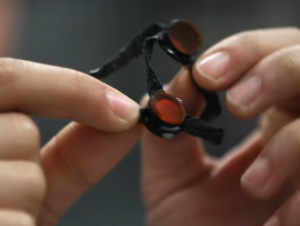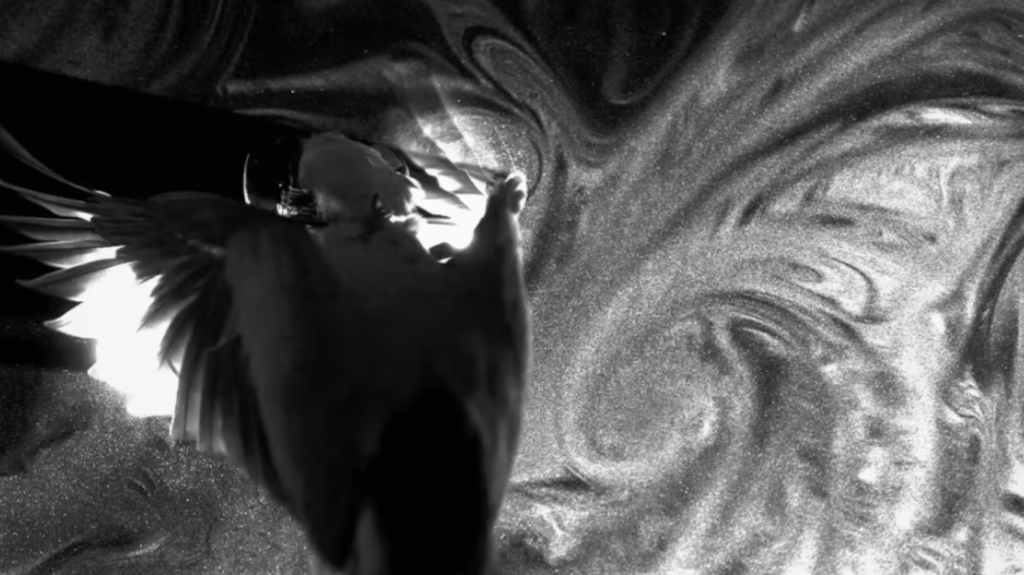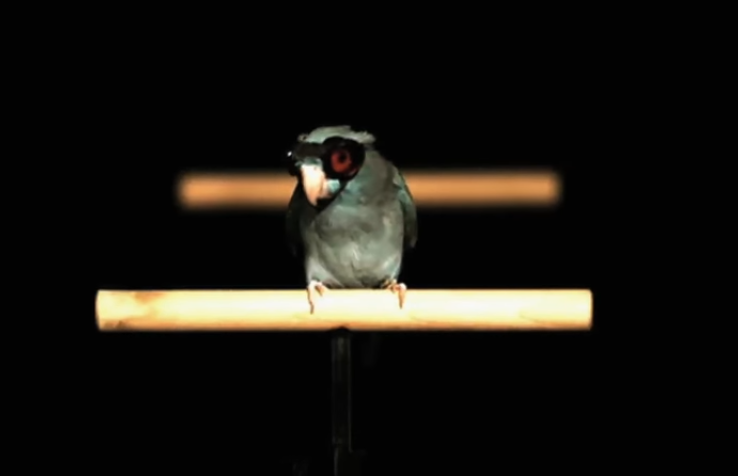A Parrotlet in 3D Printed Goggles Just Proved Researchers Wrong About the Aerodynamics of Bird Flight
 Sometimes science can be really, really adorable – while teaching us important things, as well. While putting tiny goggles on a small parrot may seem to be good for nothing more than creating the next viral YouTube hit – a worthy goal in itself – researchers at Stanford University had a much bigger objective in mind when they trained a parrotlet named Obi to fly around while wearing a pair of miniature goggles.
Sometimes science can be really, really adorable – while teaching us important things, as well. While putting tiny goggles on a small parrot may seem to be good for nothing more than creating the next viral YouTube hit – a worthy goal in itself – researchers at Stanford University had a much bigger objective in mind when they trained a parrotlet named Obi to fly around while wearing a pair of miniature goggles.
Eric Gutierrez is a graduate student working under the tutelage of David Lentink, an assistant professor of mechanical engineering and a member of Stanford Bio-X. Gutierrez was responsible for training Obi, a Pacific parrotlet, to fly through a laser sheet that illuminated tiny, nontoxic aerosol particles in order to study the vortices created by the bird’s flight. The results of the experiment, published in a new study entitled “Lift calculations based on accepted wake models for animal flight are inconsistent and sensitive to vortex dynamics,” could have a significant effect on the design of drones and other flying robots. The study’s authors are Eric Gutierrez, Daniel B. Quinn, Diana D. Chin and David Lentink.
“The goal of our study was to compare very commonly used models in the literature to figure out how much lift a bird, or other flying animal, generates based off its wake,” said Diana Chin, a graduate student in the Lentink lab and co-author of the study. “What we found was that all three models we tried out were very inaccurate because they make assumptions that aren’t necessarily true.”
Those assumptions include the belief that the vortices created by birds or other flying animals remain relatively frozen over time, like airplane contrails. Certain past methods of measuring the wake left behind a flying animal included measuring a few wingbeats behind it, and predicting that the vortices generated by the wingbeats would remain constant. Obi and his handlers proved that that’s not at all what happens.
When the parrotlet flew through the micro-sized aerosol particles, illuminated by the laser sheet, his wings disturbed the particles to create a visual record of the vortices generated by his flight, and showed that the vortices break up much more suddenly than previously believed. The luminous, swirling particles gave the researchers the clearest picture thus far of the wake left by a flying animal, and thus the amount of lift generated.
“Now, whereas vortex breakup happens far away behind the aircraft – like more than a thousand meters – in birds, it can happen very close to the bird, within two or three wingbeats, and it is much more violent,” said Lentink.
Lentink and his lab specialize in the design of biologically inspired robots, such as a flapping robot that takes off vertically like an insect, and a winged robot whose design is based on a swift. The parrotlet study presents the most accurate information to date about how winged animals generate enough lift to fly and to support their weight during flight – reframing how engineers approach the design of flying robots.
“Many people look at the results in the animal flight literature for understanding how robotic wings could be designed better,” said Lentink. “Now, we’ve shown that the equations that people have used are not as reliable as the community hoped they were. We need new studies, new methods to really inform this design process much more reliably.”
 Any pioneering scientist needs proper protective equipment when working with things like lasers, so Gutierrez designed a pair of tiny goggles to protect Obi’s eyes as he flew through the laser sheet. The parrotlet’s eyewear was created with lenses from a pair of human laser safety goggles, 3D printed sockets and veterinary tape – plus reflective markers on the sides so that the researchers could better track Obi’s velocity.
Any pioneering scientist needs proper protective equipment when working with things like lasers, so Gutierrez designed a pair of tiny goggles to protect Obi’s eyes as he flew through the laser sheet. The parrotlet’s eyewear was created with lenses from a pair of human laser safety goggles, 3D printed sockets and veterinary tape – plus reflective markers on the sides so that the researchers could better track Obi’s velocity.
And Lentink believes that Obi is a pioneering parrotlet indeed. The new technique his lab has developed could be combined with detailed flow measurements, he believes, to better understand the aerodynamics involved in the varying flight patterns of different species of birds, bats and insects. You can watch Obi’s flight below:
Discuss in the Parrotlet forum at 3DPB.com.
[Source: Stanford University]
Subscribe to Our Email Newsletter
Stay up-to-date on all the latest news from the 3D printing industry and receive information and offers from third party vendors.
You May Also Like
Gorilla Sports GE’s First 3D Printed Titanium Cast
How do you help a gorilla with a broken arm? Sounds like the start of a bad joke a zookeeper might tell, but it’s an actual dilemma recently faced by...
Nylon 3D Printed Parts Made More Functional with Coatings & Colors
Parts 3D printed from polyamide (PA, Nylon) 12 using powder bed fusion (PBF) are a mainstay in the additive manufacturing (AM) industry. While post-finishing processes have improved the porosity of...
$25M to Back Sintavia’s Largest Expansion of Metal 3D Printing Capacity Since 2019
Sintavia, the digital manufacturing company specializing in mission-critical parts for strategic sectors, announced a $25 million investment to increase its production capacity, the largest expansion to its operations since 2019....
Velo3D Initiates Public Offering in a Bid to Strengthen Financial Foundations and Drive Future Growth
Velo3D (NYSE: VLD) has been among a number of publicly traded 3D printing firms that have attempted to weather the current macroeconomic climate. After posting a challenging financial report for 2023,...

































